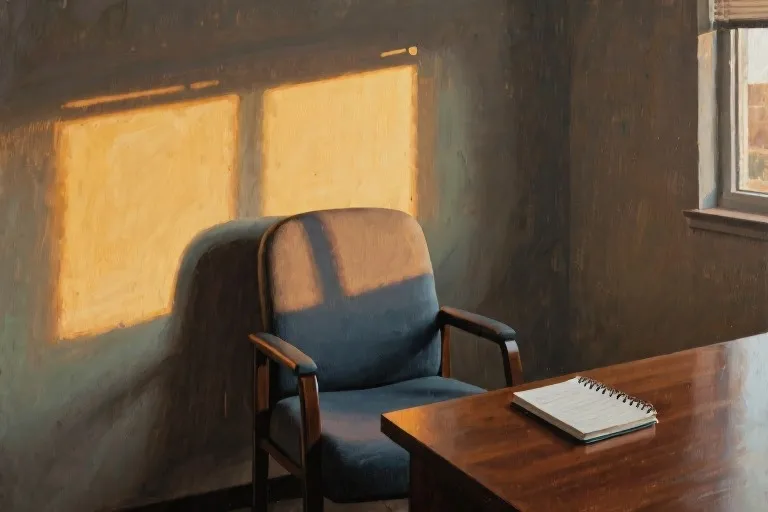“The shout came from above, slicing through the hum of evening traffic – “Fala baixo, vaca.” My friend barely had time to snap back “I won’t!” before the rock found its target. Blood trickled down her temple as Wednesday night shoppers continued flowing past, their oblivious footsteps smearing crimson droplets across the pavement.
This wasn’t some dim alley encounter or drunken bar fight. At 10:30pm on a completely ordinary weeknight, on a street lined with cafes and boutiques, a man decided a woman’s laughter warranted projectile punishment. The hospital staff would later tell us the stone had left a 3cm gash that required layered sutures – the kind usually reserved for construction accidents, not conversations between friends.
What lingers isn’t just the metallic smell of blood on her collar, or the way her hands shook holding the CT scan results. It’s the chilling normalcy of it all – how violence lives in the same breath as a demand for silence, how public space becomes contested territory the moment a woman’s voice carries too far. That rock didn’t just break skin; it exposed the fragile veneer of safety we mistake for equality.
Emergency rooms have their own peculiar rhythm. Between the beeping monitors and shuffling paperwork, I watched a nurse pick gravel from my friend’s hair with tweezers, each tiny clink against the metal tray sounding absurdly loud. Five stitches for the wound they could see. No procedure for the others – the ones that make women rehearse their laughter before releasing it, that teach us to swallow words when men frown in our direction.
The Physical Imprint of Trauma
The emergency room hummed with a particular kind of efficiency that felt almost violent in its precision. Fluorescent lights reflected off stainless steel surfaces as the CT scanner whirred to life, its mechanical groan drowning out my friend’s shallow breathing. The technician’s gloved hands moved with practiced detachment, adjusting the headrest that still carried traces of her blood in the crevices.
Five stitches. That was the official tally – three along the hairline where the rock had split skin, two more where flying debris had nicked her temple. The doctor used 4-0 nylon sutures, the kind normally reserved for facial wounds where scarring matters. I remember this detail with absurd clarity, how the thin blue thread contrasted against her pale skin as it pulled the edges of her wound together.
In her hair, the nurses kept finding fragments of gravel. Tiny, sharp pieces that clung stubbornly to her dark curls even after two rounds of washing. They fell onto the paper-covered examination table like grim confetti, each speck a physical reminder of how quickly an ordinary evening can fracture. One particularly jagged piece sat on the nurse’s tray, its edges still bearing flecks of dried blood where it had torn through flesh before embedding itself.
The strangest part wasn’t the blood – though there had been surprisingly much of it, pooling thick and dark around the collar of her shirt before dripping onto the sidewalk. Nor was it the suddenness of the attack, though replaying those seconds still makes my stomach clench. It was the hospital’s bright, sterile normality that felt most jarring. The way the intake forms asked about ‘mechanism of injury’ with the same bureaucratic indifference as they would for a sprained ankle. The plastic bracelet with her name and birthdate clicking against the gurney rails. The distant sound of someone’s laughter floating in from another room.
They discharged her with instructions to watch for concussion symptoms and return in seven days for suture removal. The discharge papers listed the diagnosis as ‘assault by blunt object,’ a phrase so clinical it erased the man’s snarling voice, the weight of the stone in his hand, the way her knees had buckled when impact rattled through her skull. Outside, the night air smelled of rain and car exhaust, ordinary and unchanged. Somewhere nearby, on that same stretch of pavement now washed clean, another woman raised her voice in conversation, completely unaware of how fragile the social contract protecting that simple act really was.
The Spectrum of Silencing: From Rocks to Daily Rebukes
The rock that struck my friend’s head didn’t emerge from nowhere. It traveled along a well-worn path of escalating violence society has paved for women who dare to occupy audible space. That shouted command – fala baixo, vaca – represents just the visible tip of an iceberg we’ve all learned to navigate.
Physical violence always shocks us, but we rarely trace its origins to the thousand tiny paper cuts of everyday silencing. In office meetings, women’s suggestions often float into the air only to be credited to male colleagues who repeat them seconds later. At family gatherings, aunts still hush loud-voiced nieces with that look perfected through generations. On streets worldwide, catcalls punish women for both silence and speech in a paradoxical dance of control.
Three distinct yet connected arenas demonstrate this spectrum:
Workplace acoustics operate on sophisticated mute buttons. Studies show women get interrupted 33% more often in professional settings. The techniques range from subtle (leaning back during female presentations) to blatant (taking credit for ideas first voiced by women). These aren’t isolated incidents – they’re the daily maintenance of an unequal soundscape.
Domestic spaces enforce quieter volumes through emotional currency. The sigh when a mother raises her voice, the eye-roll at an ’emotional’ tone, the classic ‘you’re overreacting’ – these form the soft policing of decibel levels in private spheres. Unlike street harassment, these quiet rebukes leave no bruises but still shrink vocal ranges over time.
Public territories exhibit the most visible enforcement. From library shushes directed disproportionately at chatting girls to the street harassment my friend endured, public spaces remain contested ground for female audibility. The rock thrower simply employed the most extreme tool from an established toolkit for keeping women’s voices at ‘appropriate’ levels.
What connects a boardroom interruption to a bloody scalp wound? The same unspoken rule: women’s voices should never exceed their allotted volume. The violence spectrum runs from microaggressions to physical harm because societies preserve multiple enforcement options. When eye-rolls fail, sarcasm follows. When sarcasm doesn’t land, shouts emerge. And when shouts go unanswered… well, sometimes rocks fly.
This escalation path isn’t inevitable – it’s constructed. Each tolerated act of quiet silencing makes the louder ones seem reasonable by comparison. By the time physical violence occurs, countless smaller violations have already whispered: This is normal. This is how things are. The rock didn’t break the silence – it was just the loudest note in an ongoing symphony of suppression.
The Historical Anatomy of Silencing
The medical archives from 19th-century Europe contain disturbing evidence of how female voices became pathologized. Doctors diagnosed women who spoke too loudly or too frequently with ‘hysteria,’ prescribing everything from enforced silence to surgical removal of the ovaries. These yellowed documents reveal more than antiquated science – they expose a systemic pattern of equating vocal women with malfunctioning biology.
This medicalized silencing took grotesque forms. A prominent 1890 Lancet paper claimed elevated vocal tones could cause uterine displacement, while French neurologists mapped ‘shrillness’ to reproductive disorders. The stethoscope, ironically became a tool not just for listening to heartbeats, but for measuring and condemning the pitch of women’s speech.
The legacy persists in digital form today. Voice recognition algorithms consistently lower volume on higher-pitched speakers, with one Stanford study showing podcast editing software automatically applies 30% more noise reduction to female hosts. These technological ‘corrections’ recreate the same silencing mechanisms once enforced by leeches and lobotomies – just wrapped in lines of code instead of medical authority.
What connects the Victorian operating theater to modern soundboards is the unspoken assumption that certain frequencies require control. The tools have evolved from surgical scalpels to AI filters, but the underlying impulse remains: to modulate, temper, and ultimately reduce female audibility in shared spaces. When my friend’s assailant shouted ‘Fala baixo, vaca,’ he was channeling centuries of this institutional conditioning.
Contemporary research reveals how deeply these patterns embed themselves. Neuroimaging shows women’s brains lighting up in fear centers when amplifying their voices, while men’s display no such activity. The historical weight of suppression becomes biological reality – not through some innate difference, but through generations of being told, medically and violently, that vocal cords are meant to be restrained.
This isn’t just about volume control. It’s about who gets to occupy sonic space unchallenged, and who must constantly negotiate their right to be heard. The rock that struck my friend’s head carried the momentum of two hundred years of sanctioned silencing – each impact echoing those nineteenth-century diagnoses that declared women’s voices dangerous unless carefully measured and contained.
The Soundscape of Power
The volume limits in male-dominated spaces tell their own story. Sports stadiums have decibel meters to protect fans’ hearing, yet parliamentary debates often exceed 100dB without triggering alarms. This acoustic double standard reveals how we’ve institutionalized certain voices while policing others.
Neuroscience adds disturbing context to this phenomenon. MRI studies show distinct brain activity patterns when women speak at increased volumes. The amygdala – our fear processing center – lights up with disproportionate intensity. It’s as if our neural wiring has internalized centuries of social conditioning that equates female loudness with danger.
Consider the courtroom, another space where vocal dynamics play out with gendered consequences. Research from Northwestern University found female attorneys who raised their voices were 30% more likely to be cited for contempt than male colleagues displaying identical behavior. The threshold for ‘disruptive’ varies depending on who’s making noise.
These acoustic boundaries aren’t just metaphorical. Architectural acoustics in government buildings often amplify lower frequency ranges – the vocal sweet spot for male speakers. Many modern conference rooms feature sound dampening systems calibrated to male conversational volumes, automatically filtering out higher pitches during meetings. The built environment literally tunes out certain voices.
What makes these findings particularly chilling is how they manifest in everyday interactions. That moment when a woman clears her throat to speak in a meeting, only to have her first syllables overlap with a male colleague’s continued remarks? It’s not just rudeness – it’s the physical manifestation of socialized sound hierarchies. Our collective ear has been trained to prioritize certain frequencies.
The solution isn’t teaching women to project more (though vocal coaches have built entire practices on this premise). It’s about recognizing how space, architecture, and even neuroscience have conspired to create unequal soundscapes. Next time you notice someone being repeatedly talked over, pay attention not just to the words, but to the underlying acoustics of power at play.
The Clock Stops at 10:30
The stitches pulled her skin together in precise, clinical rows – five neat little bridges spanning the wound. A medical resident explained they’d used 4-0 nylon, the kind that dissolves slowly. Down the hall, the CT scanner hummed its confirmation: no fractures, just trauma the machine couldn’t measure. My friend picked gravel fragments from her hair while nurses discussed dinner plans over the blood pressure cuff.
Outside the ER, the city continued its Wednesday night rhythm. Taxis honked at pedestrians, bars spilled laughter onto sidewalks, couples argued over late-night snacks. Normalcy flowed around the hospital like water diverting around a stone – except here, time coagulated. The wall clock’s second hand trembled between 10:29 and 10:30, as if the violence had fractured spacetime itself.
We measure healing in visible increments – suture removal dates, fading bruises, hair regrowing over scars. But some wounds resist closure. That rock didn’t just break skin; it cracked open the thin veneer of what we call civilization, exposing the ancient machinery beneath: the gears that still grind female voices into silence. Every ‘don’t be so emotional’, every ‘you’re prettier when you smile’, every interrupted sentence in meetings – these are smaller stones thrown from the same quarry.
The resident handed her discharge papers with aftercare instructions: keep dry, watch for infection, return if headaches persist. No guidelines for the other injury, the one no scan could detect. We walked past the frozen clock into air that smelled of rain and diesel. Somewhere above us, a window remained open.





